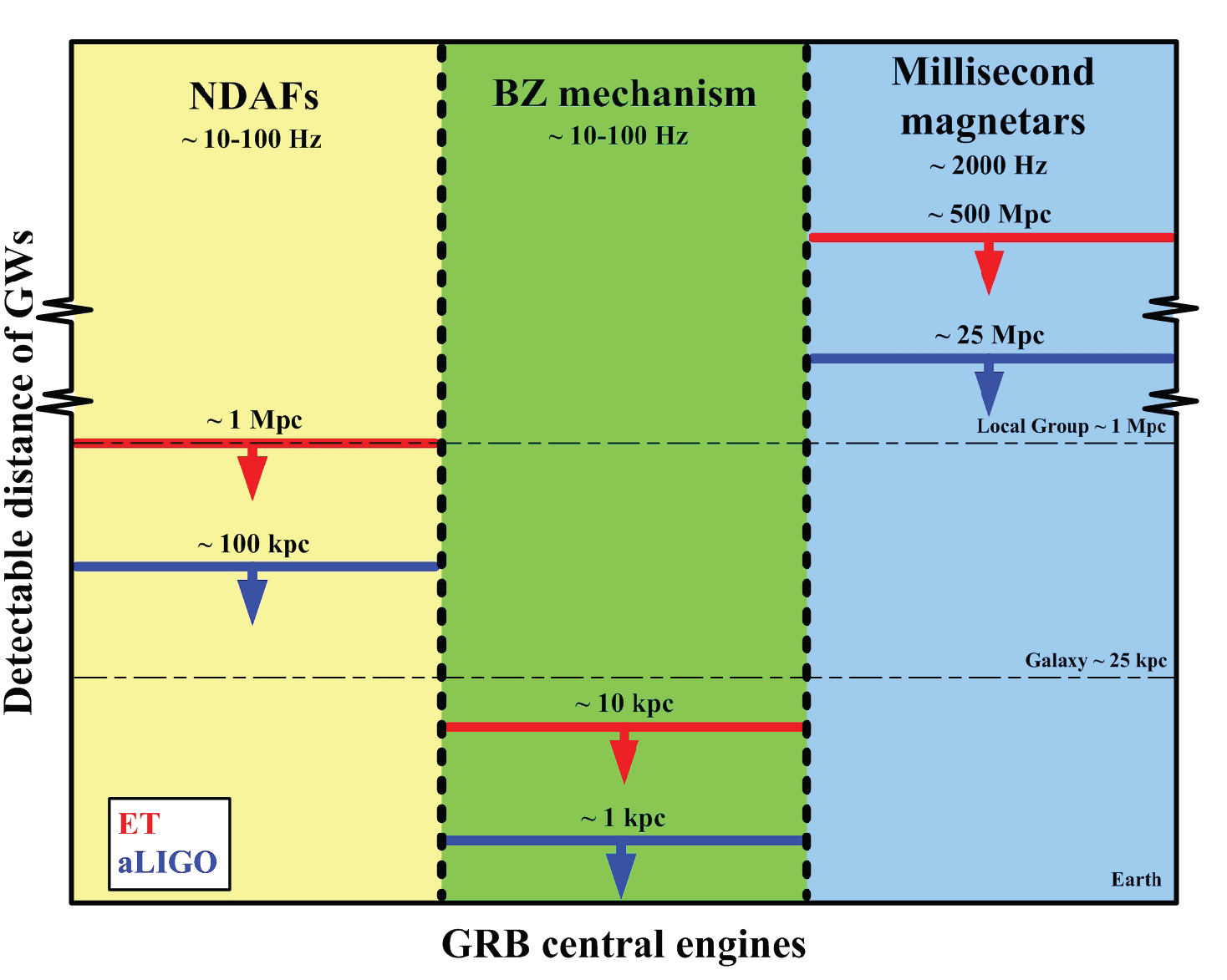
Tong Liu, Chao-Yang Lin, Cui-Ying Song, and Ang Li
Neutrino-dominated accretion flow (NDAF) around a rotating stellar-mass black hole (BH) is one of the plausible candidates for the central engines of gamma-ray bursts (GRBs). Because the time-variant and anisotropic emission of neutrinos from NDAFs leads to GRB variability, NDAFs can be regarded as the sources of the strong gravitational waves (GWs). We calculate the dependences of the GW strains on both the BH spin and the accretion rate. We demonstrate that for typical GRBs with either single pulse or multiple pulses, the GWs from NDAFs might be detected at a distance of ~ 100 kpc / ~ 1 Mpc by advanced LIGO/Einstein Telescope with a typical frequency of ~ 10-100 Hz. Besides NDAFs, the other two competitive candidates for GRB central engine are Blandford-Znajek (BZ) mechanism and millisecond magnetars. We explore the GW signals from these two as well, and compare the corresponding results with NDAFs'. We find that for a certain GRB, the possible detected distance from NDAFs is about two orders of magnitude higher than that from BZ mechanism, but at least two orders of magnitude lower than that from magnetars. The typical GW frequency for BZ mechanism is the same with that of NDAFs, ~ 10-100 Hz, while the typical frequency for magnetars is ~ 2000 Hz. Therefore, the GWs released by the central engines of adjacent GRBs might be used to determine whether there is an NDAF, a BZ jet or a magnetar in GRB center.